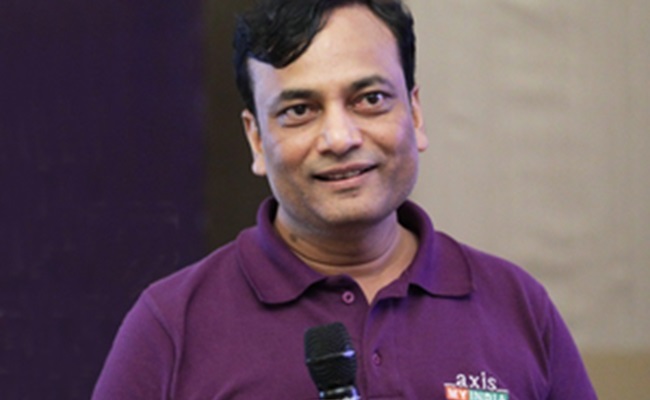
Opinion

The Bharatiya Janata Party (BJP) on Saturday announced its first list of candidates for more than one-third of Lok Sabha constituencies, headed for polling in the upcoming 2024 Parliamentary elections. The nominee list features many heavyweight leaders, 34 serving Union Ministers and Ministers of State, with Prime Minister Narendra Modi leading from the front.
While the release of BJP's mammoth list of 195 candidates, a month ahead of elections has set the political landscape buzzing, nation's leading psephologist Pradeep Gupta, in an exclusive conversation with IANS has decoded the pros and cons of it, and whether this will give the party a head-start for its 'Abki Baar 400 Paar' ambition.
Pradeep Gupta, the CMD of Axis My India, hailed the party's attempt to pre-empt its rivals despite a strong saffron undercurrent, by declaring candidates well in advance. Though he refrained from making any predictions, he explained the areas where the party will need to plug the gaps and also where it will need to solidify gains for the ambitious 400 mark.
He opined that the BJP's early and 'socially engineered' list of candidates will give it the first mover advantage and also help connect across various strata of society.
Notably, Axis My India is the nation's most popular polling survey agency with most credible predictions, with accuracy amounting to more than 92 per cent.
Pradeep Gupta welcomed the healthy mix of experienced and young faces in the party's list and said that this will send the right message to people that 'non-performers' would not continue to occupy the chair.
"Replacing Meenakshi Lekhi by Bansuri Swaraj for the New Delhi seat is one such example," he said.
He further said that the party, while finalising the candidates, did not have second thoughts and went precisely by means of the MPs' public connect and performance.
Dropping all big names from the 7 Lok Sabha seats of Delhi, except Manoj Tiwari, is a case in point.
However, the party has been cautious with allies' concerns this time, citing the example of Bihar and Maharashtra, where no candidate was announced.
Notably, BJP has set a target of winning 370 seats in 2024 Lok Sabha polls, giving 'rightful tribute' to Article 370 abrogation, and hoping to push it beyond the 400-mark with support from its allies.
The Axis My India chief said that BJP commands huge support in the Hindi heartland, which has gone many notches higher after Ram Mandir inauguration.
The region where the party needs to apply a big thrust is South India, where its presence remains minimal despite the top party brass making frequent visits and also galvanising the local leadership.
In the 2019 elections, the BJP-led NDA bagged 352 seats. For spiking it to 400, the alliance will need victory in 48 more constituencies.
Tamil Nadu and Puducherry (UT), together adding 40 seats, Kerala (20), Andhra Pradesh (25) and Punjab and Chandigarh (14 seats -- 13 from Punjab and 1 from the UT) seats could be the BJP's biggest bets for realising its dream of the 400-mark, says Gupta.
Together, they account for about 100 seats and BJP/NDA's winning record here is less than 5 per cent.
"A lot will depend on BJP's alliance formation with regional satraps, de-facto, the bigger political force in these states. The 400 seats target will depend heavily on the party's ability to form an alliance, be it AIADMK in Tamil Nadu or Akali Dal in Punjab," said Gutpa.
He further explains that another area to plug the '48 seat gap' would be those seats and states where the BJP wave swept away the rivals in 2019 and still stands a chance of accelerating its victory march a bit more.
Breaking down the BJP's tremendous show in Uttar Pradesh and West Bengal in 2019 polls, Pradeep Gupta explains that the party decimated its rivals but this time, the number charts could go up a few notches more, given the renewed vigour of 'Brand Modi' and also realisation of Ram Temple dream, a topic that evokes strong emotions in North India, in particular.
In 2019 polls, the BJP won 64 of 80 Lok Sabha seats in Uttar Pradesh and 18 of 42 seats in West Bengal. Together, the seats that went to rival parties stand at 40. If BJP penetrates more into their voter base and does better than in 2019, it will help plug the '48-seat gap', thus helping realise its goal of 'Abki Baar 400 Paar'.
However, there remains a rider – the party must retain those 212 seats, which it won in 2019 elections by a thumping majority.
(Mukesh Ranjan can be contacted at mukesh.r@ians.in)
Advertisment